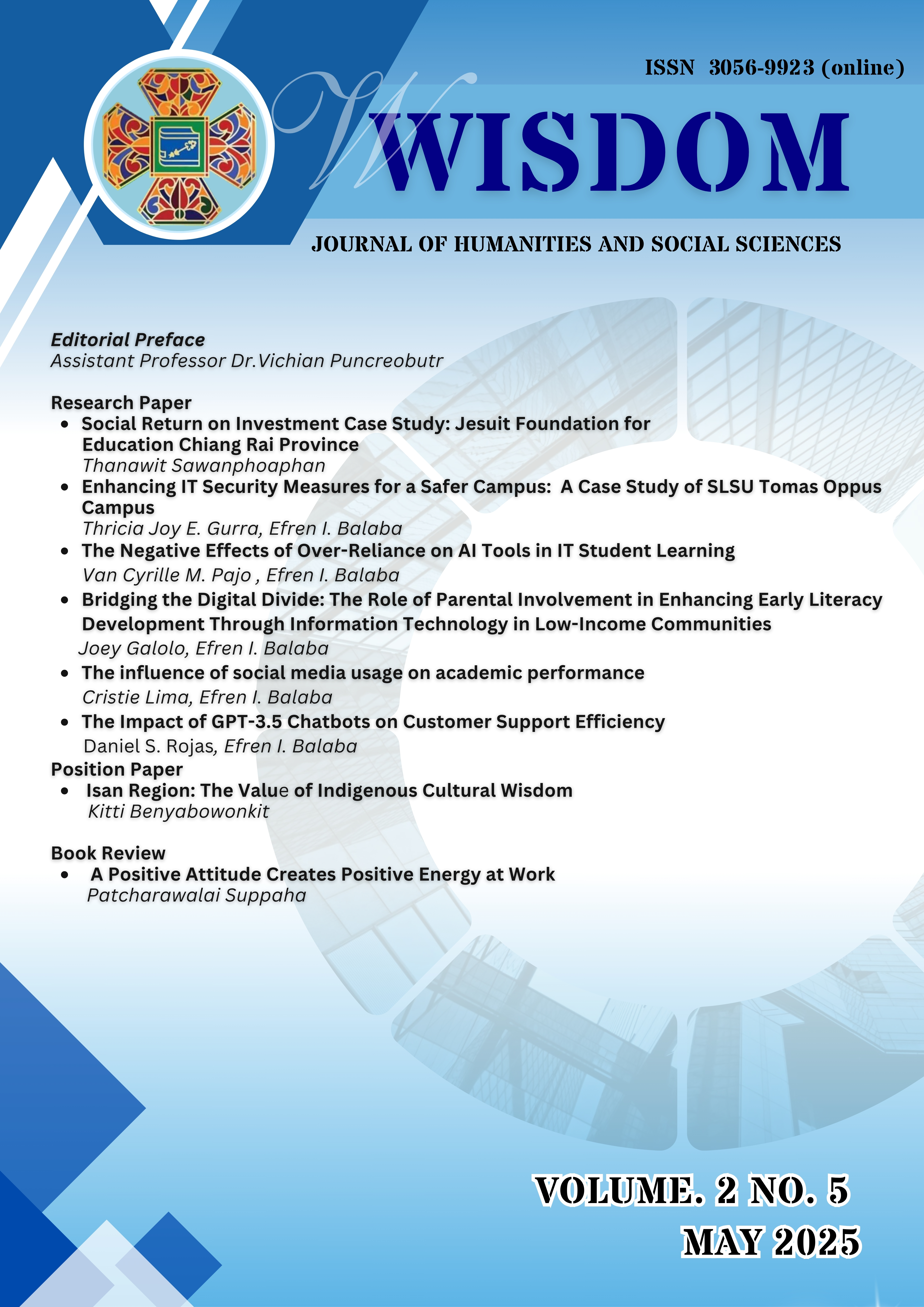The Impact of GPT-3.5 Chatbots on Customer Support Efficiency
Keywords:
GPT-3.5, Customer Support, Natural Language ProcessingAbstract
The rapid evolution of customer support technologies has been accelerated by the integration of AI-driven chatbots, with GPT-3.5 emerging as a major breakthrough. This study examines the performance of GPT-3.5 in customer service applications, specifically focusing on its ability to classify customer intent and generate high-quality responses. The results reveal that GPT-3.5 demonstrates outstanding intent classification accuracy, even when customers use varied phrasing that significantly deviates from scripted templates. This suggests a robust understanding of natural language semantics. In addition, GPT-3.5 produces responses that are coherent, personalized, and empathetic—closely resembling human interaction. Unlike traditional rule-based systems that rely on rigid keyword matching and limited decision trees, GPT-3.5 can dynamically generate responses in real time, adapting to a wide range of customer queries. This flexibility allows businesses to handle complex interactions more efficiently while enhancing user satisfaction.The study's findings underscore GPT-3.5's ability to redefine customer support by offering faster, smarter, and more natural communication. It significantly reduces the need for human intervention in routine inquiries and provides a scalable solution for businesses facing high volumes of customer interactions. Furthermore, the human-like tone and contextual awareness foster trust and engagement, turning support systems into value-driven experiences rather than transactional exchanges.In conclusion, GPT-3.5 sets a new standard in AI-enabled customer service. Its integration into customer support workflows holds the potential to transform how organizations engage with clients—delivering efficient, empathetic, and intelligent assistance across diverse service domains.
References
Agarwal, A., Maiya, S., & Aggarwal, S. (2021). Evaluating empathetic chatbots in customer service settings. arXiv preprint arXiv:2101.01334. https://arxiv.org/abs/2101.01334
Brown, T., Mann, B., Ryder, N., Subbiah, M., Kaplan, J., Dhariwal, P., ... & Amodei, D. (2020). Language models are few-shot learners. Advances in Neural Information Processing Systems, 33, 1877–1901. https://doi.org/10.5555/3327757.3327879
Chaidrata, A., Shafeeu, M. I., Chew, S. K., Chen, Z., Cham, J. S., Yong, Z. L., ... & Bahrin, D. I. B. K. (2022). Intent matching based customer services chatbot with natural language understanding. arXiv preprint arXiv:2202.00480. https://arxiv.org/abs/2202.00480
Chi-Heng, Y., Yen, J.-C., & Wang, T. (2022). Human vs machine: Do customer service chatbots perform better? PACIS 2022 Proceedings, 61. AIS eLibrary. https://aisel.aisnet.org/pacis2022/61
Mashaabi, M., Alotaibi, A., Qudaih, H., Alnashwan, R., & Al-Khalifa, H. (2022). Natural language processing in customer service: A systematic review. arXiv preprint arXiv:2212.09523. https://arxiv.org/abs/2212.09523
Xu, Z., Cruz, M. J., Guevara, M., Wang, T., Deshpande, M., Wang, X., & Li, Z. (2024). Retrieval-augmented generation with knowledge graphs for customer service question answering. arXiv preprint arXiv:2404.17723. https://arxiv.org/abs/2404.17723
Yang, C.-H., Yen, J.-C., & Wang, T. (2022). Human vs machine: Do customer service chatbots perform better? PACIS 2022 Proceedings, 61. AIS eLibrary. https://aisel.aisnet.org/pacis2022/61
Zhou, L., Gao, J., Li, D., & Shum, H.-Y. (2020). The design and implementation of XiaoIce, an empathetic social chatbot. Computational Linguistics, 46(1), 53–93. https://doi.org/10.1162/coli_a_00362




